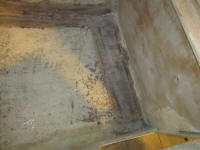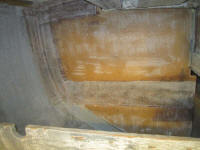
110 Cookson Lane | Whitefield, ME 04353 | 207-232-7600 | tim@lackeysailing.com
To begin, I briefly sanded the two pieces of tabbing I'd installed last time.
The face of the hanging locker cabinet in the passageway still needed to be patterned, so made a paper pattern in the usual way. I also measured the narrow rectangular bulkhead across the passageway.
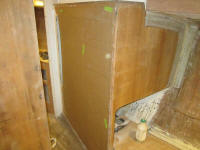
With all the patterns complete--for now, as there'd be more to come later in the saloon and galley--I spread out around the shop several sheets of 1/4" Perfecta cherry plywood that I'd purchased for this job, so I could look at all the grain and determine which sheets would be best for what. Eventually, I worked my way through, labeling sheets for current or future usage based on my impressions of the sheets' appearances.
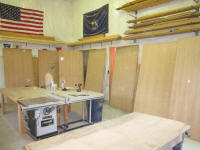
Over the course of the day, I used my patterns to cut out various panels, beginning with the two forward-facing bulkheads in the forward cabin, both of which I cut from the same sheet of plywood. Inevitably, each piece required fine-tuning and minor recutting to fit.
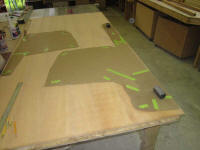

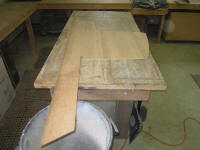
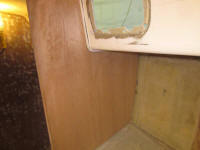
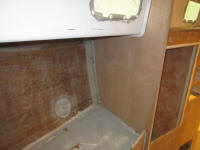
After cutting the panel for the chainlocker bulkhead, I marked and roughly cut out the opening to the chainlocker before test-fitting the piece. Once the piece was in place, I traced the actual opening onto the back of teh sheet, then removed it and recut the opening to match.
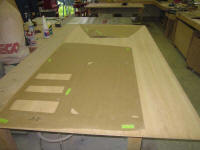
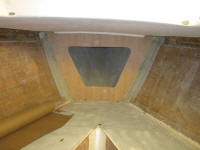
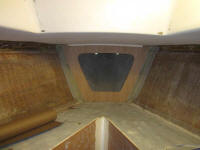
I followed the same process with the hanging locker face, which included three drawer openings and the large opening into the hanging locker itself. Using marks from my pattern, I rough-cut these openings before test-fitting, then traced the insides of the openings and recut them to match the existing openings.
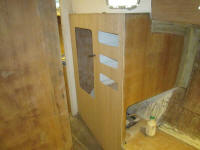
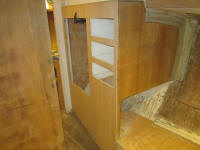
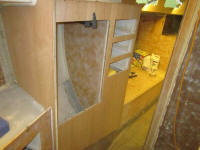
With the hanging locker veneer temporarily in place, I cut a small triangular piece to fit over the top shelf, scribing it to fit the contours of the molded liner at the forward end.
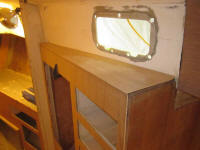
The narrow bulkhead defining the aft part of the head and passageway at the centerline was the simplest to cut, as this piece was rectangular with no odd shapes.
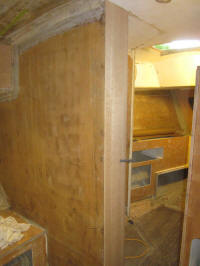
I laid out the patterns for the lower v-berth bulkheads on a single sheet of plywood and transferred the marks for cutting, but since it was the end of the day I left the cutting for next time.

Total Time on This Job Today: 7.5 hours
